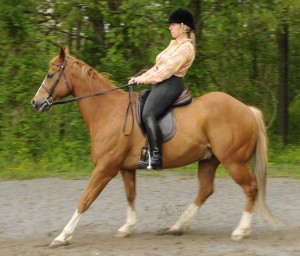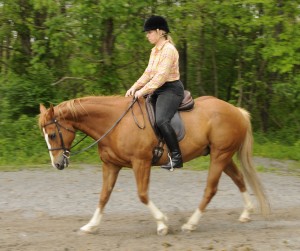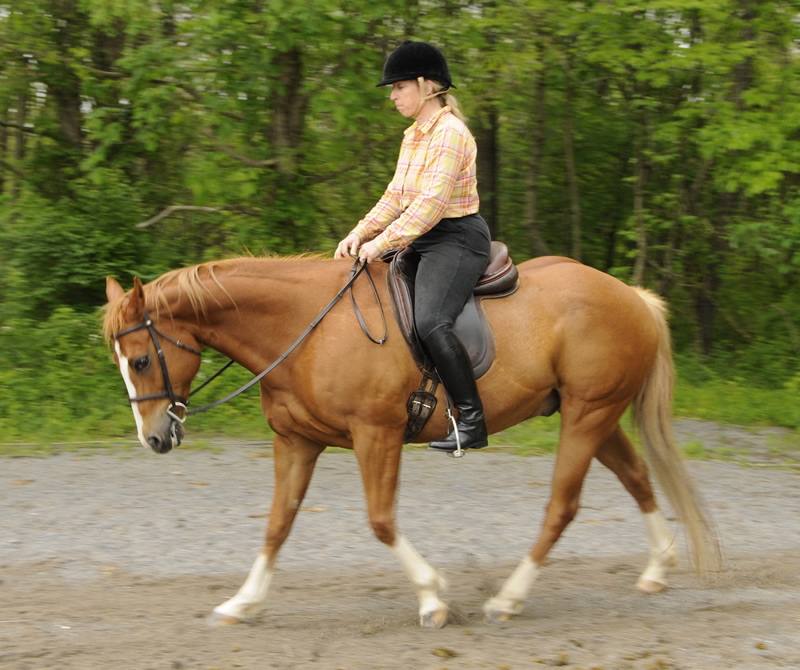
Do you have trouble backing your horse up (rein back)? Does he raise his head and hollow his back? Does he refuse to move? Do you try to pull your horse back with the reins? Here’s a quick tip to ease your back up woes.
Next time you ride, stop and back your horse up a few steps. If you have never done this with your horse from the saddle, start on the ground. What happens when he backs up? Is he resistant? Does he brace against your hands? Do you try to pull him backwards? Do you tense your buttocks and hips? Do you lean backwards or tip forwards? How you ask your horse to back is often the source of the problem.
Many horses stiffen or hollow their back, which makes it difficult to rein back correctly. Other horses are confused and don’t understand what is being asked because the rider conflicts the aids by squeezing with the buttocks while pulling on the reins. When backing up it is important that you are clear and do not impede the horse from doing what you ask.
To clarify the rein back for the horse, start on the ground. While standing at his head, ask the horse to take a few steps backwards. Watch what he does. Do you try to push him back or ask him to step back? Does he understand and comply or brace against you?

Touch his chest (you can use a whip gently on the chest or front legs) while signaling with the reins so that he understands what you want him to do. Is it difficult for him to back up? Does he brace in his hind legs or back? If so then I suggest you spend some time on the ground showing him what you want before asking from the saddle.
Do some bodywork such at the TTEAM leg circles with him especially if he has difficulty moving the hind legs. The TTEAM ground exercises are also helpful in getting a sticky horse to back up smoothly. Once your horse can back from the ground you can proceed to the saddle.
Have a ground person help you when asking the first few times to combine what you did on the ground with mounted work. Have ground person ask your horse to back while you passively feel what the horse does from the saddle. Always go forward after taking a few steps back and never let the horse decide to go backwards on his own – this is a serious fault and can be dangerous if the horse uses backing as an evasion! Repeat this a few times and then give him a break by trotting forward.

Next, as the ground person begins ask the horse to back think of a bungee cord attached to the back of your pants in the belt area pulling you backwards. Shorten the reins until you have contact with the horse’s mouth and simply close your fingers. Your rein aids should not pull back but only create a wall or barrier to your horse’s forward movement. Use your legs by tapping with your ankles to generate the steps. Make sure your leg aids are pulsing. If you grip you will block his movement because gripping restricts your hips. If he tries to move forward simply close your fingers and begin again with your lower back setting the direction.
Here’s where your ground person can be really helpful to assist your horse so that your horse understands what you want. Ask for only one or two steps at first until both you and the horse back smoothly with a minimum of effort. Gradually begin to take over for your ground person with your aids until your horse back smoothly without assistance.
Use this Murdoch Minute to back up smoothly and easily. Remember it is important to teach your horse to back from the ground first and use the ground person as you transfer the request to the saddle. Never let the horse back up by himself. If he does this promptly send him forward and always remember to enjoy the ride!




